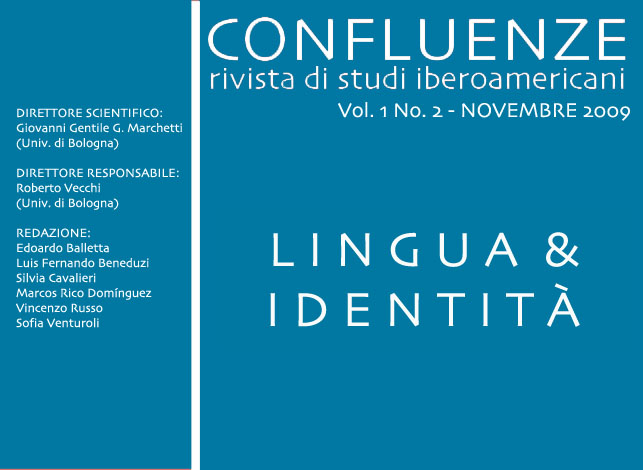Da esquizofrenia à antropofagia: leituras da história
DOI:
https://doi.org/10.6092/issn.2036-0967/1661Abstract
From the confluence of readings, which in principle would be called disparate, the present essay intents to expose a zone of threshold among the proposes of Aby Warburg, in his The Ritual of the Serpent, going over the readings of the dialectical images in Benjamin, to the problem of the signatures in Foucault, until the conception of anthropophagy of Oswald de Andrade. In a very first moment, some analyses about the conception of symbol in Warburg and the compositional mode of his Mnemosyne are exposed. Then, an exposition of Benjamin ?s theorizations about the dialectics images is done, always using the comprehensions from his contemporary readers (Giorgio Agamben, Georges Didi-Huberman, among others). Therefore, an approximation of the dialectical images to the idea of signature in Michel Foucault can be done; such approximation is only possible having as a support a method, here called archeological (a study of the origin – arké), which enables the proposition of an anachronism in the reading(s) of history(ies). Finally, it analyses how an anthropophagic conception of history – from Oswald de Andrade – can be a strategic way to break with a schizophrenic chronology of history and a passage to an anachronic (anthropophagic) reading of history, that does not aim to suture the limits postulated by the tradition of the occidental thinking (civilized/primitive, rational/irrational etc.), but to dilute them into thresholds, in order to give a new possibility to what (history) seemed not to have anymore. A partir da confluência de leituras, que a princípio se diriam díspares, o presente ensaio pretende expor uma zona de limiaridade entre as propostas de Aby Warburg, em seu O Ritual da Serpente, passando pelas leituras das imagens dialéticas em Benjamin, ao problema das assinaturas em Foucault, chegando à concepção de antropofagia de Oswald de Andrade. São apresentadas, num primeiro, análises a respeito da concepção de símbolo em Warburg, bem como do modo composicional de seu Mnemosyne. Em seguida, é feita uma exposição a respeito das teorizações benjaminianas sobre as imagens dialéticas, utilizando- se sempre das compreensões de seus leitores contemporâneos (Giorgio Agamben, Georges Didi-Huberman, dentre outros). Assim, uma aproximação das imagens dialéticas à idéia de assinatura em Michel Foucault pode ser feita; tal aproximação somente é possível tendo-se como suporte um método, denominado aqui de arqueológico (um estudo da origem – arké), que possibilita a proposição de um anacronismo na(s) leitura(s) da(s) história(s). Por fim, analisa como uma concepção antropofágica – a partir de Oswald de Andrade – da história pode ser um meio estratégico de se romper com uma cronologia esquizofrênica da história e passagem a uma leitura anacrônica (antropofágica) da história, que não visa suturar os limites postulados pela tradição do pensamento ocidental (civilizado/primitivo, racional/irracional etc.), mas diluí- los em limiares, de modo a dar uma nova possibilidade àquilo (a história) que parecia não mais tê-la.Downloads
Come citare
Fascicolo
Sezione
Licenza
Copyright (c) 2009 Vinícius Nicastro Honesko
I diritti d'autore e di pubblicazione di tutti i testi nella rivista appartengono ai rispettivi autori senza restrizioni.
La rivista è rilasciata sotto una licenza Creative Commons Attribuzione 4.0 Internazionale (codice legale completo).
Vedere inoltre la nostra Open Access Policy.
Metadati
Tutti i metadati dei materiali pubblicati sono rilasciati in pubblico dominio e possono essere utilizzati da ognuno per qualsiasi scopo. Questi includono i riferimenti bibliografici.
I metadati – riferimenti bibliografici inclusi – possono essere riutilizzati in qualsiasi formato senza ulteriori autorizzazioni, incluso per scopo di lucro. Chiediamo cortesemente agli utenti di includere un collegamento ai metadati originali.






